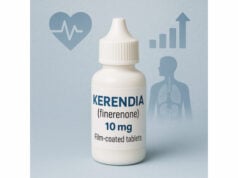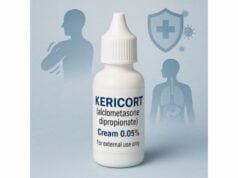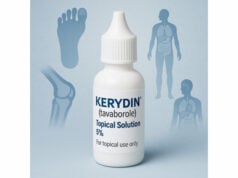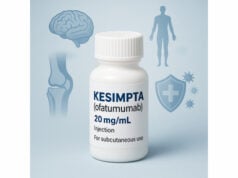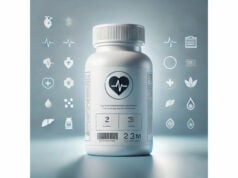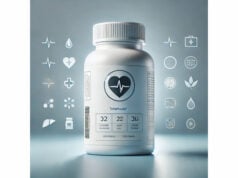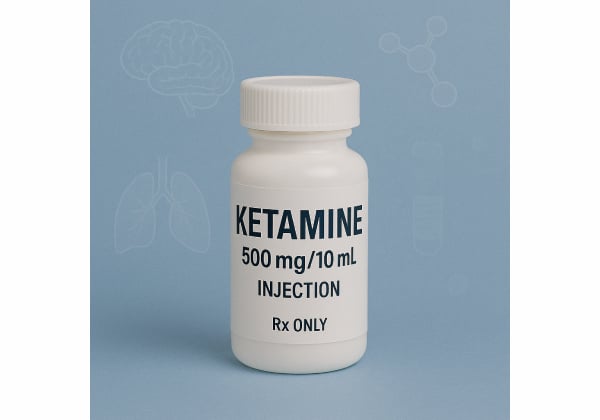
Ketamine has moved from operating rooms into carefully supervised mental health clinics, where its fast-acting effects can sometimes relieve severe depression within hours. Originally developed as an anesthetic, ketamine (and its related medicine, esketamine) works through the brain’s glutamate system rather than the serotonin and norepinephrine pathways targeted by most antidepressants. That different mechanism helps explain why some people who have not improved with standard treatments may respond to ketamine. At the same time, ketamine is a controlled substance with meaningful risks—dissociation, blood-pressure spikes, and misuse among them—which is why legitimate treatment occurs in clinical settings with monitoring and clear safety protocols. This guide explains how ketamine works, what benefits are supported by clinical evidence, where and how it’s used in medicine today, typical supervised dosing approaches, key safety issues, and who should avoid it or proceed only with specialist oversight.
Quick Overview
- Can provide rapid relief of treatment-resistant depression and suicidal thoughts under medical supervision.
- Clinical options include IV ketamine infusions and intranasal esketamine administered in a certified clinic.
- Typical supervised dosing: IV 0.5 mg/kg over ~40 minutes; esketamine 56–84 mg in clinic on scheduled days.
- Not a first-line therapy; avoid or delay in uncontrolled hypertension, certain aneurysms, pregnancy, or active substance use disorder.
- Requires on-site monitoring for at least 2 hours after each esketamine dose; do not drive until the next day after restful sleep.
Table of Contents
- What ketamine is and how it works
- Does ketamine help, and for whom?
- How treatment is given and dosage
- Who is a candidate and who should avoid it?
- Safety, side effects, and interactions
- What to expect during supervised care
What ketamine is and how it works
Ketamine is a dissociative anesthetic medicine used worldwide for surgical anesthesia, procedural sedation, and pain control. In psychiatry, clinicians use either racemic ketamine (a mixture of two mirror-image molecules) or esketamine (the S-enantiomer, available as a regulated intranasal prescription). Both act primarily as noncompetitive antagonists of the NMDA (N-methyl-D-aspartate) receptor, a key component of the glutamate signaling system. Blocking NMDA receptors sets off a cascade that increases synaptic glutamate at AMPA receptors, boosts neurotrophic factors such as BDNF, and promotes synaptogenesis (the formation and strengthening of synaptic connections). In practical terms, those changes are thought to “reset” dysfunctional circuits involved in mood, cognition, and stress responses.
Unlike typical antidepressants, which often need four to eight weeks to relieve symptoms, ketamine’s effects can begin within hours for some patients. That speed matters in treatment-resistant depression (TRD)—defined broadly as an inadequate response to at least two antidepressants—and in situations involving acute suicidal ideation, where rapid improvement can be life-saving. Esketamine (the ketamine-derived nasal spray used only in clinics) is dispensed under a federal safety program that requires on-site administration, observation for a minimum period afterward, and strict controls on storage and dispensing.
Ketamine is not a cure or a stand-alone solution. Many people who respond need repeat sessions to maintain progress, and most benefit from combined care: psychotherapy, sleep and activity regularity, management of coexisting conditions (e.g., anxiety, substance use disorder), and—when tolerated—standard antidepressants. Because ketamine can temporarily raise blood pressure and cause dissociation or sedation, careful medical screening and monitoring are essential at every visit. Responsible programs also track outcomes over time, reviewing whether benefits outweigh risks and whether treatment is still indicated.
Finally, it is important to distinguish medically supervised treatment from nonmedical use. Recreational ketamine carries well-documented risks, including intoxication-related injuries, cognitive effects, and urinary tract damage with heavy or frequent use. Legitimate psychiatric care is delivered by trained clinicians in controlled settings with protocols, checklists, and emergency equipment on hand. That separation—between clinical therapy and unsupervised use—is fundamental to safe, ethical practice.
Does ketamine help, and for whom?
Evidence supporting ketamine for mood disorders has grown considerably over the last decade. In adults with treatment-resistant major depressive disorder, multiple randomized and real-world studies show that IV ketamine can produce large, rapid reductions in depressive symptoms—often within 24 hours—with effects that can persist several days to a few weeks after a single infusion. Repeated-dose protocols (for example, six infusions over two to three weeks) appear to sustain or deepen response in a significant subset of patients. Response rates in clinical settings commonly range from about one-third to two-thirds, depending on definitions and patient selection. Many nonresponders to standard antidepressants still have a chance of responding to ketamine because it works through different neurochemical pathways.
Esketamine, the intranasal medicine related to ketamine, has been authorized in adults with TRD and for depressive symptoms in major depressive disorder accompanied by acute suicidal ideation or behavior. In those settings, it is administered only in certified clinics with mandatory monitoring. Clinical trials and aggregated reviews indicate that adding esketamine to usual care can increase the odds of response and remission over several weeks compared with placebo nasal spray plus usual care. For acute suicidality, both ketamine and esketamine can lessen suicidal thoughts rapidly; however, they do not replace comprehensive safety planning, psychotherapy, and follow-up care.
Who tends to benefit? Patterns reported across studies include:
- Adults with TRD after inadequate trials of two or more antidepressants.
- People needing a rapid reduction in suicidal ideation while broader treatment plans (therapy, medications, social supports) take effect.
- Some patients with comorbid anxiety or bipolar depression (without acute mania or psychosis) may respond; specialist evaluation is required.
Important boundaries remain. Evidence for long-term maintenance strategies is evolving, and individual responses vary widely. Early improvement after the first few sessions often predicts a better medium-term course; lack of any improvement after several properly delivered treatments is a signal to reconsider the plan. For chronic pain, subanesthetic ketamine regimens can reduce pain in selected conditions when managed by experienced teams; protocols differ from psychiatric care and involve their own risk–benefit assessments.
In short, ketamine is best viewed as an option for carefully selected patients, not a universal fix. It is most compelling when the clinical need for rapid relief is high, when standard approaches have not worked, and when monitoring and follow-through are robust.
How treatment is given and dosage
There are two clinically common pathways: intravenous (IV) racemic ketamine infusions and intranasal esketamine given in a certified clinic. Both require pre-visit medical screening (including blood-pressure assessment, review of cardiovascular and urologic history, medications, pregnancy status, and substance use), on-site administration by trained staff, and observation afterward.
IV ketamine (racemic) in psychiatry
- Induction/acute series: A widely used protocol is 0.5 mg/kg IV infused over about 40 minutes, typically twice weekly for two to three weeks (often six infusions total). Some programs adjust the dose within a conservative range based on tolerability and response, maintaining medical monitoring during and after each session.
- Maintenance: For responders, spacing often extends to weekly, then every 2–4 weeks, using the lowest effective frequency. Maintenance is individualized and should be revisited regularly to confirm ongoing benefit, functional gains, and safety.
- Setting: Delivered in clinics equipped for hemodynamic monitoring and management of adverse reactions. Patients need an escort, should not drive the day of treatment, and receive post-visit instructions about rest and hydration.
Intranasal esketamine (SPRAVATO) in certified clinics
- For treatment-resistant depression (adults):
- Induction (Weeks 1–4): 56 mg or 84 mg, twice weekly, administered in-clinic under direct supervision.
- Maintenance (after Week 4): 56 mg or 84 mg once weekly (Weeks 5–8), then every 1–2 weeks as clinically indicated.
- For depressive symptoms with acute suicidal ideation or behavior (adults):
- 84 mg twice weekly for 4 weeks (some patients begin at 56 mg if not tolerated), alongside standard care.
- Observation and restrictions: After each dose, patients are monitored in the clinic (vital signs, mental status) for at least two hours before discharge; no driving until the next day after a restful sleep.
Other routes you may hear about
- Intramuscular (IM) and subcutaneous (SC) routes are used by some specialty programs, generally with weight-based dosing and on-site monitoring similar to IV care.
- Oral and compounded nasal ketamine are used off-label in some regions; because compounded products do not go through the same approval and risk-management processes, programs that use them should have rigorous protocols for safety, accountability, and patient education.
- Anesthesia and procedural sedation: Ketamine remains a standard tool in emergency and operative care at anesthetic doses far higher than psychiatric regimens. Those uses follow separate anesthesia guidelines and monitoring standards.
Medication timing and combinations
Clinicians review concurrent medicines that can influence ketamine’s effects (for example, benzodiazepines may blunt response in some reports, while blood-pressure medicines and stimulants need careful planning around treatment days). Alcohol and recreational substances should be strictly avoided around sessions. Many patients continue their existing antidepressant or mood-stabilizing regimen unless there is a clear reason to adjust.
Practical tips for patients
- Eat a light meal several hours before your appointment, and arrive hydrated unless advised otherwise.
- Arrange transportation home and plan for a quiet evening after treatment.
- Track your symptoms and function between visits; share those notes at follow-ups to fine-tune your plan.
All dosing decisions belong to the treating clinician, who will adapt protocols to your medical history, vital signs, prior responses, and goals.
Who is a candidate and who should avoid it?
Good candidates typically include:
- Adults with treatment-resistant depression who have not responded adequately to at least two antidepressants, and who have been evaluated for contributing factors (sleep disorders, thyroid issues, medication interactions, substance use, trauma, or psychosocial stressors).
- Individuals with major depressive disorder and acute suicidal ideation or behavior who require rapid symptom reduction while comprehensive safety planning and follow-up care proceed.
- Selected patients with bipolar depression (without psychosis or acute mania) managed by specialists who can coordinate mood stabilizers and monitoring.
- Certain chronic pain indications under pain-medicine protocols, separate from psychiatric dosing.
Proceed with caution or avoid:
- Uncontrolled hypertension, unstable cardiovascular disease, history of intracerebral hemorrhage, or vascular aneurysm not yet addressed. Ketamine can transiently elevate blood pressure and heart rate.
- Pregnancy and breastfeeding: Potential fetal risk has been signaled; most programs avoid ketamine unless benefits clearly outweigh risks and obstetric consultation supports use.
- Active psychosis or untreated mania: dissociation can worsen distress or complicate evaluation.
- Active substance use disorder or high risk of misuse: ketamine has abuse potential; if treatment is pursued, it should include addiction-focused safeguards and close monitoring.
- Severe liver disease or significant urologic history (e.g., recurrent urinary symptoms); heavy or frequent use has been associated with bladder complications in nonmedical settings.
- Recent intracranial pathology or conditions where sharp blood-pressure rises would be unsafe.
Screening essentials before starting:
- Comprehensive psychiatric evaluation, suicide risk assessment, and review of prior treatments.
- Medical history with focus on cardiovascular, neurologic, hepatic, and urologic systems; pregnancy test if applicable.
- Baseline vitals; targeted labs when indicated.
- Discussion of risks, benefits, alternatives, and logistics (need for an escort, time in clinic, time off work, cost).
Signals to pause or discontinue:
- No meaningful improvement after a properly delivered induction series.
- Emergence of worrisome adverse effects (persistent hypertension, severe dissociation, repeated vomiting, urinary symptoms).
- Evidence of misuse, medication diversion, or nonadherence to safety rules (e.g., driving home after sessions).
The decision to start, continue, space out, or stop ketamine is always individualized and should be revisited at regular intervals using symptom scales, functional measures, and patient-defined goals.
Safety, side effects, and interactions
Common short-term effects during or soon after a dose
- Dissociation or perceptual changes (feeling detached, altered time/sensory perception).
- Sedation, dizziness, and fatigue.
- Nausea and occasionally vomiting; some clinics premedicate if prior sessions caused significant nausea.
- Transient blood-pressure and heart-rate increases; monitoring and, if necessary, short-acting medicines are used to manage significant spikes.
- Headache, blurred vision, anxiety, or feeling “spacey.”
These generally peak during administration and resolve over one to several hours, which is why on-site observation is required.
Less common or longer-term concerns
- Urinary tract symptoms (urgency, frequency, pain) and ketamine-associated cystitis have been observed with frequent, heavy nonmedical use; clinical programs monitor for early urinary symptoms and keep exposure as low as possible to achieve benefit.
- Cognitive effects (concentration or memory complaints) can occur transiently; programs reassess if symptoms persist.
- Worsening anxiety, agitation, or mood lability in a subset of patients; clinicians adapt or discontinue treatment accordingly.
- Dependence and misuse potential: ketamine is a Schedule III controlled substance. Legitimate programs mitigate risks via observed dosing, secure storage, prescription monitoring, and careful screening.
Drug and condition interactions
- Blood-pressure medicines and stimulants: coordinate timing on treatment days; ketamine can raise BP/HR.
- Benzodiazepines: higher doses may attenuate antidepressant response in some patients; clinicians sometimes limit dose near sessions when safe to do so.
- Sedatives, alcohol, and opioids: increase sedation and respiratory risk; avoid around sessions.
- MAOIs and certain antidepressant combinations: require specialist oversight and individualized planning.
Post-dose restrictions
- No driving, operating machinery, or high-risk tasks until the next day after a restful sleep; arrange a ride home from every clinic session.
- Resume normal activities gradually; hydration and a light meal often help residual symptoms fade.
Program safeguards that improve safety
- Trained staff present throughout dosing, with protocols for hypertension, severe anxiety, nausea, or rare respiratory events.
- Continuous or frequent vital-sign checks; ready access to emergency equipment and medications.
- Standardized patient-reported outcome measures to track benefit and side effects over time.
- Clear rules about abstaining from alcohol or recreational drugs before and after sessions.
Your care team will explain which effects are expected and which require a call or urgent evaluation (e.g., persistent chest pain, severe headache, fainting, or signs of urinary infection).
What to expect during supervised care
Before your first session
You will complete medical and psychiatric evaluations, including current medications and allergies. The team will review how ketamine works, expected benefits and risks, program policies, and logistics for each visit. You will receive instructions about eating, hydration, and transportation. A baseline symptom scale and safety plan are usually completed.
On treatment days
- Check-in and vitals: staff confirm that you meet criteria to proceed (e.g., blood pressure is controlled).
- Administration:
- IV infusion: placed by trained staff; infusion runs over roughly 40 minutes while you rest in a quiet room.
- Intranasal esketamine: staff guide a step-by-step self-spray technique; dosing is observed and timed in the clinic.
- Observation: you rest in a comfortable space while staff monitor your vitals and how you feel. Dissociation and dizziness typically ease over one to two hours.
- Departure: once you are clinically stable, staff discharge you with after-care instructions. An escort is required; plan to avoid demanding activities for the rest of the day.
Between sessions
- Track mood, sleep, anxiety, pain, and function using brief questionnaires or a symptom diary.
- Keep therapy, behavioral strategies, and healthy routines going; ketamine is most effective when integrated into comprehensive care.
- Report any urinary symptoms, persistent headaches, or unusual cognitive changes promptly.
Costs and access
- Esketamine is administered only in certified clinics with on-site monitoring requirements; coverage varies by region and insurer.
- IV ketamine for psychiatric use is off-label in many places and may involve out-of-pocket costs; programs should provide transparent pricing and outcome tracking.
- Ask about program credentials, emergency protocols, informed consent materials, and how progress is measured.
Setting goals and measuring success
Work with your clinician to define clear targets (e.g., reduction in suicidal ideation, improved daily functioning, ability to return to work or school). After an induction series, review whether benefits justify continuing, spacing out, or stopping. If there is no meaningful improvement, your team should discuss alternatives and next steps.
A note on expectations
Not everyone responds; even among responders, benefits may be partial or temporary. The safest and most effective programs are candid about these realities, right-size expectations, and emphasize ongoing evaluation.
References
- SPRAVATO® (esketamine) nasal spray, CIII 2024 (Prescribing Information)
- Ketamine | National Institute on Drug Abuse (NIDA) 2024 (Overview)
- Ketamine treatment for depression: a review 2022 (Review)
- Esketamine for treatment-resistant depression: A review of clinical evidence 2023 (Review)
- Efficacy and safety of ketamine and esketamine for unipolar and bipolar depression: an overview of systematic reviews with meta-analysis 2024 (Systematic Review)
Disclaimer
The information in this article is educational and is not a substitute for personalized medical advice, diagnosis, or treatment. Ketamine and esketamine carry significant risks and should only be used under the supervision of qualified healthcare professionals in appropriate clinical settings. Always consult your clinician before starting, changing, or stopping any treatment, and call emergency services if you are in crisis or may harm yourself or others.
If you found this helpful, please consider sharing it on Facebook, X (formerly Twitter), or any platform you prefer, and follow us for future updates. Your support helps us continue creating reliable, people-first health guides.

